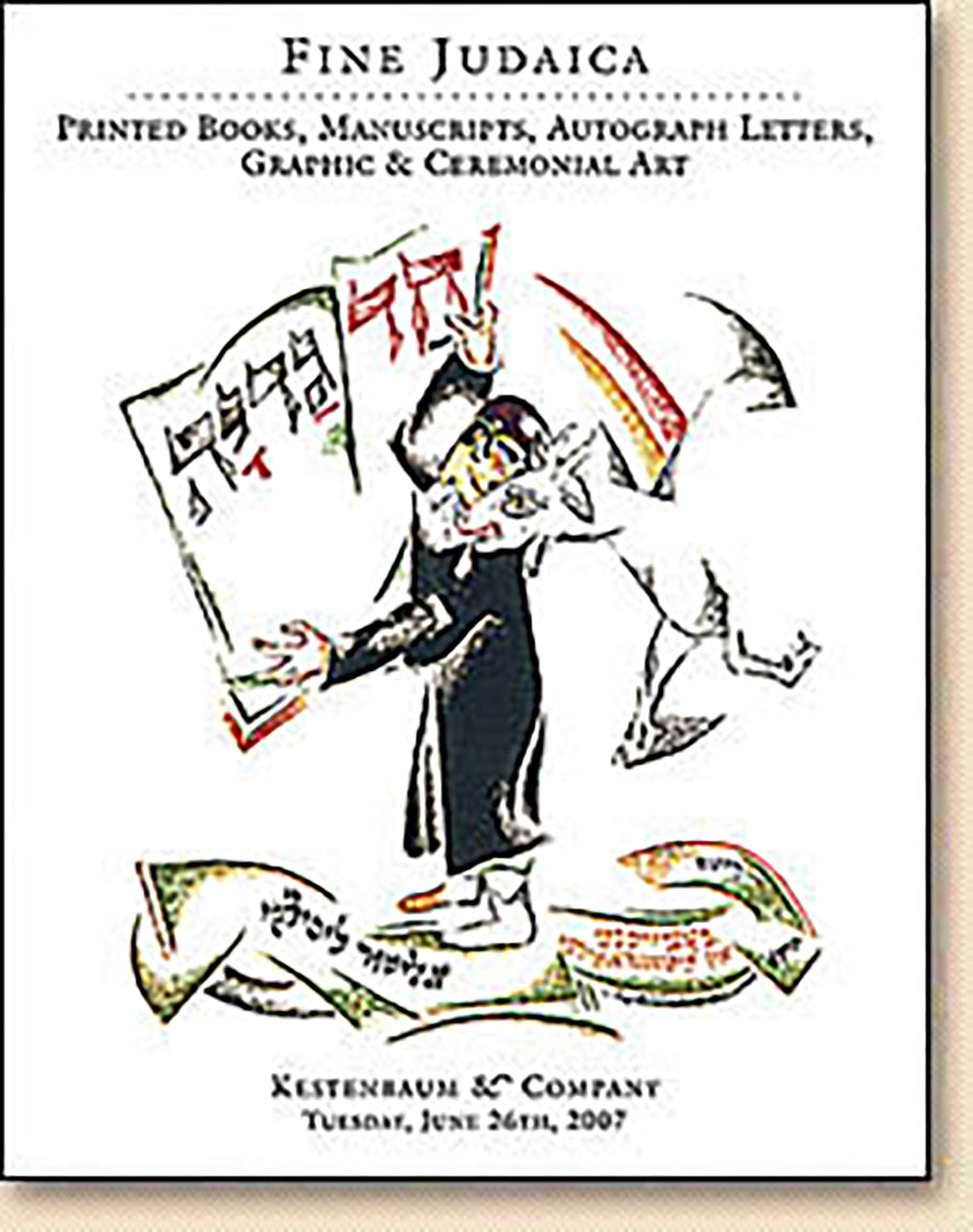Chad Gadya [“The Only Kid.”)

AUCTION 37 |
Tuesday, June 26th,
2007 at 1:00
Fine Judaica: Printed Books, Manuscripts, Autograph Letters, Graphic & Ceremonial Art
Lot 197
(LISSITZKY, ELIEZER).
Chad Gadya [“The Only Kid.”)
Kiev: 1919
Est: $30,000 - $50,000
PRICE REALIZED $28,000
El (Eliezer) Lissitzky (1890-1941) was one of the premier artists of the Russian Revolution. Along with such notables as Marc Chagall, as well as Nathan Altman and Issachar Ryback, Lissitzky joined a generation of Jewish artists who "consciously divorced (themselves) from...the religious messianic ideal which had been a keynote of Judaism - and transformed it into a secularized messianic yearning for the redemption of mankind" (Kampf, 17).
The year 1919 was particularly important in Lissitzky's life. During this pivotal time in his artistic career, he produced a series of plates, called Chad Gadya, which directed Jewish themes toward the Revolutionary events of the time. According to Alan Birnholz, Chad Gadya "is a tale of retribution, of forces overpowering and vanquishing other forces, with the ultimate power of God victorious in the end over death and evil" (Kampf, 46). Ruth Apter-Gabriel emphasizes the Bolshevik theme in the plates, pointing out that Lissitzky's illustrations present "the story in such a way as to also include his new messianic view of redemption though the Communist Revolution" (Tradition and revolution, 113).
Another important aspect of Chad Gadya is its significance as a Jewish cultural work. Aside from its obvious status as a Jewish text, this work shows Lissitzky's focus on "Assyrian script," that is, the Hebrew block text which he uses to number the pages. This focus on Jewish cultural aspects was popular among many Russian artists of the time, who started their work as illustrators of Jewish children's stories before they achieved artistic popularity in the secular world.
Artistically, every aspect of the page, including the page numbers, has been carefully drawn and illuminated. In "El Lissitzky: Life Letters Texts," the "layout of the text" is described as "architectonic," a description that fits perfectly with Lissitzky's contemporaneous Proun works (see below). Each page of his Chad Gadya has a specific structure, with the Yiddish text arching over the story it depicts, framing the image as an architectural structure frames its inhabitants.
It is not surprising, therefore, that "the Chad Gadya of 1919...(is)acknowledged to be Lissitzky's most splendid Jewish work."
Published in an edition of just 75, only a few copies of Chad Gadya are now known to exist. Together with Malevich's "Suprematizm, 34 Risunka," Chad Gadya was among the first Russian avant garde works to be condemned and destroyed as bourgeois relics during the Stalin era. Of the few copies known to have survived in private collections, no more than one or two have retained the original dust-jacket. Apparently, the last such copy was sold at auction at Christie's London, 27th June 1984, Lot 684, wherein John E Bowlt, Professor of Slavic Languages at the Universtiy of Texas in Austin wrote "This is the first time that a dust-jacket for the 1919 edition of Chad Gadya has come to public attention and at the present time no other copy is known to exist."
See Israel Museum Catalogue, Tradition and Revolution (1987) pp. 101-124; Busch-Reisinger Museum Catalogue, El Lissitzky (1987) number 1919/1; El Lissitzy: Life Letters Texts (1992) number 20; A. Kampf, Jewish Experience in the Art of the Twentieth Century (1984) pp. 24-25 and 46; Treasures of the Jewish Museum (1986) pp. 172-72; Birnholz, El Lissitzky and the Jewish Tradition in: Studio International (1973); Kazovsky, The Artists of the Kultur-Lige (2003) pp. 193-203; E. van Voolen, Jewsih Art and Culture (2006) pp.80-1
